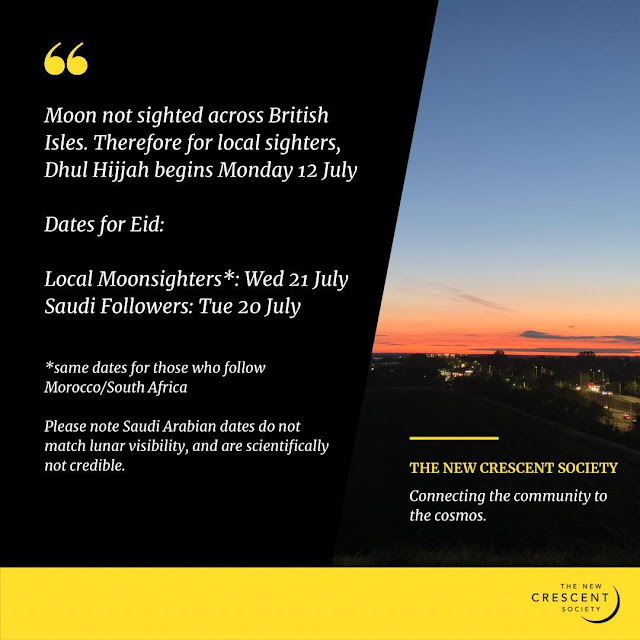Why does the UQ calendar tend to begin its months a day earlier than lunar visibility?
Why does the UQ calendar tend to begin its months a day earlier than lunar visibility?
The reason that the UQ calendar tends to result in months that begin a day earlier than visibility requires us to have an understanding of lunar phases.
 |
| The lunar cycle |
In the lunar cycle, the New Moon is when the sun, the moon and the earth are all in one line. The New Moon is also known as ‘conjunction’. Because no part of the moon facing us is being lit, the New Moon is always invisible (see diagram, New Moon on the right is totally grey / shaded out).
The New Crescent is when the moon has moved along in its orbit, and now a sliver of the moon is being shone on by the sun, which we see as a thin crescent. In the diagram the New Crescent is called a ‘Waxing Crescent’; 'waxing' is simply a term to mean 'growing'.
It normally takes around a day for the moon to move from the invisible New Moon to the visible New Crescent. Traditionally, the Islamic Calendar did not start on the date of the New Moon, but started on the date of the first visible New Crescent.
A crude and slightly oversimplified explanation, then, of why the UQ Calendar tends to start a month earlier than visibility is because the formula is linked to the New Moon, rather than the visible New Crescent. This is why the Saudi Calendar tends to be a day earlier than countries which conduct lunar sightings every month.



Comments
Post a Comment